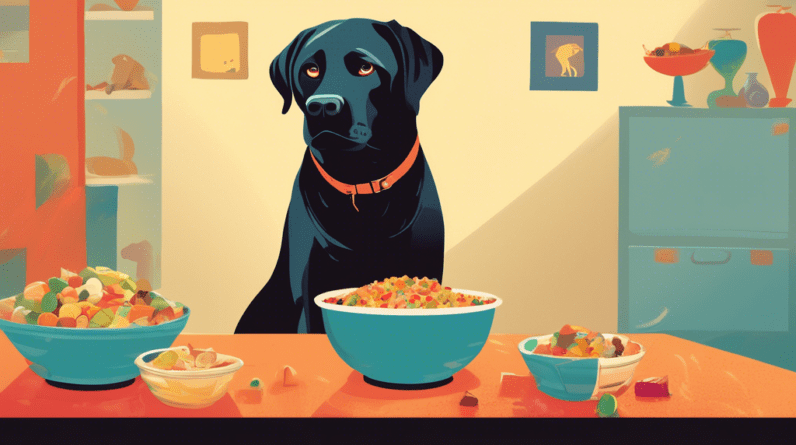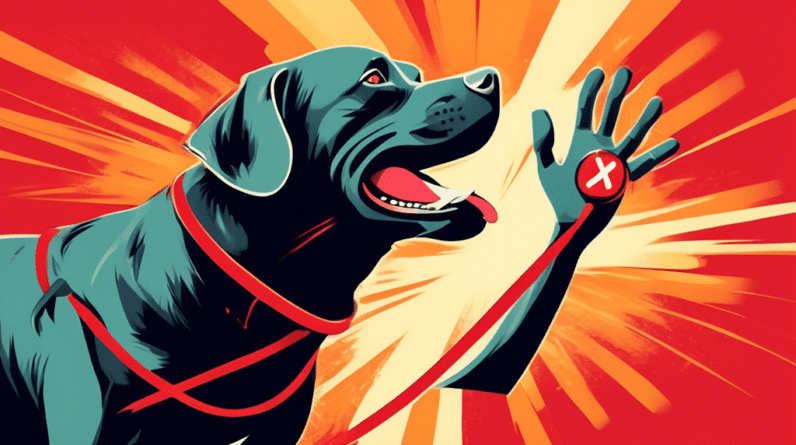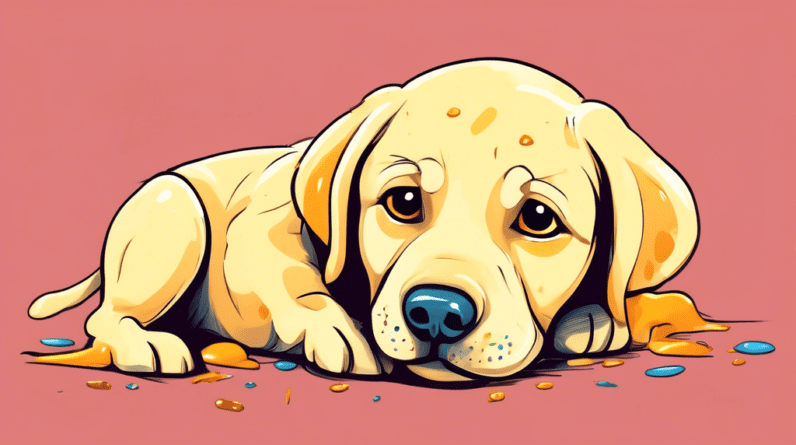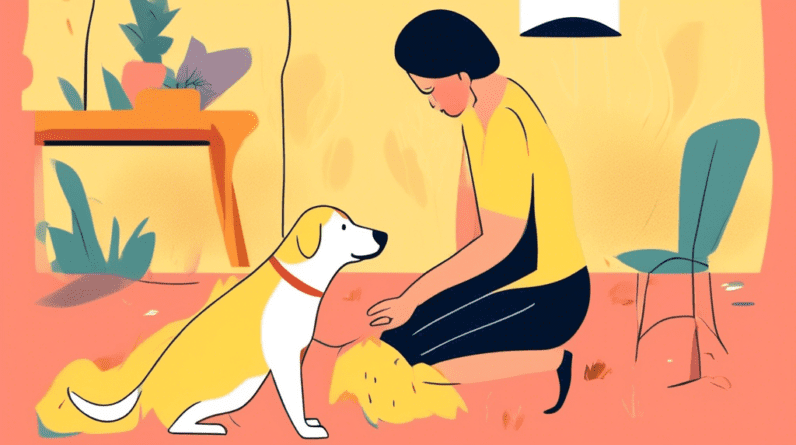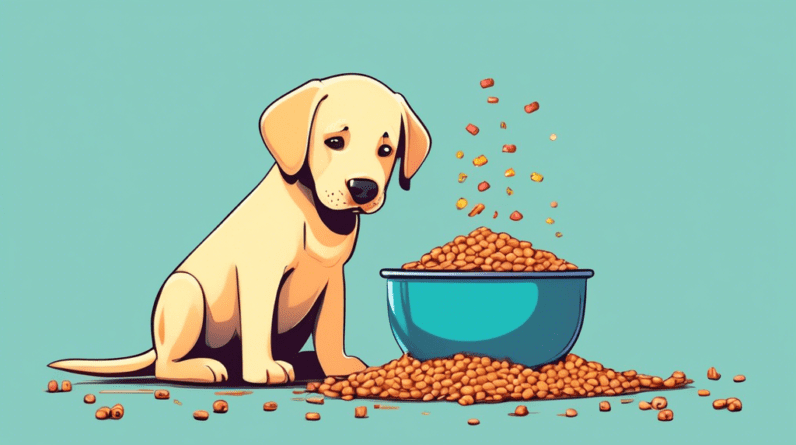
How Much Should I Feed My Lab Puppy: A Feeding Guide
Setting the Stage: Understanding Your Labrador Retriever Puppy’s Needs
Bringing home a Labrador Retriever puppy is an exciting time, filled with boundless energy, playful antics, and those adorable puppy-dog eyes. As a responsible Labrador owner, one of the most crucial aspects of caring for your new furry friend is providing them with proper nutrition. But with so many different opinions and guidelines out there, it can be challenging to determine precisely how much to feed your Lab puppy to ensure they grow into healthy, well-adjusted adults. This comprehensive guide aims to clear up any confusion and provide you with all the information you need to create a feeding plan tailored to your Lab puppy’s specific requirements.
Why Feeding the Right Amount Matters
Feeding your Labrador puppy the right amount of food is paramount for their overall health and development. Both underfeeding and overfeeding can have severe consequences, impacting their growth, energy levels, and long-term well-being. Let’s delve into why finding the right balance is crucial:
The Risks of Underfeeding:
- Stunted Growth: Puppies need a specific amount of calories and nutrients to support their rapid growth. Underfeeding can lead to stunted growth, leaving them smaller than they should be.
- Nutrient Deficiencies: Without enough food, your Lab puppy may not receive essential vitamins and minerals, leading to health problems such as weak bones, a weakened immune system, and developmental issues.
- Low Energy Levels: Food is fuel, and a lack of it can leave your puppy feeling lethargic and uninterested in playtime.
The Dangers of Overfeeding:
- Obesity: Just like in humans, overfeeding can lead to obesity in dogs, increasing their risk of developing serious health conditions such as heart disease, diabetes, joint problems, and certain types of cancer.
- Skeletal Problems: Growing too quickly due to excessive calorie intake can put stress on your Lab puppy’s developing bones and joints, leading to long-term orthopedic issues like hip dysplasia, a common concern in Labrador Retrievers.
- Digestive Issues: Overfeeding can overwhelm your puppy’s digestive system, leading to vomiting, diarrhea, and other gastrointestinal problems.
Factors Influencing Your Lab Puppy’s Food Intake
No two Lab puppies are created equal, and several factors contribute to their individual food requirements. Understanding these factors will help you determine the optimal feeding amount for your furry companion.
1. Age: A Puppy’s Changing Needs
A puppy’s nutritional needs change as they grow. As a general guideline:
- 6-12 Weeks: During this crucial growth phase, puppies require higher calorie intake than adult dogs because they’re developing rapidly. They’ll need to be fed 3-4 times a day to maintain stable blood sugar levels and provide consistent energy.
- 3-6 Months: As they enter adolescence, their growth rate slows down slightly. You can gradually reduce their feeding frequency to 2-3 times per day, but the total daily food intake should still be substantial.
- 6-12 Months: As they approach adulthood, their growth rate continues to decline. Two meals a day are usually sufficient to meet their energy requirements.
- 12+ Months: Once they’ve reached adulthood (around 12-18 months, depending on their size and breed), you can transition them to an adult dog food and feeding schedule, typically two meals per day.
2. Breed Size: Labs Are on the Larger Side
Labrador Retrievers are classified as a medium-to-large breed. As such, they have different caloric and nutritional requirements than smaller breeds. Larger breed puppies, like Labs, require a specific balance of nutrients to support their bone and joint development and prevent them from growing too quickly, which can cause orthopedic problems. Always choose a puppy food formulated for large breeds to ensure they receive the appropriate nutrient ratios.
3. Activity Level: From Couch Potato to Canine Athlete
Just like with humans, a Lab puppy’s activity level significantly impacts their caloric needs. A highly active puppy who enjoys frequent walks, playtime, and training sessions will naturally burn more calories than a less active pup who prefers napping and cuddling. Monitor your Lab puppy’s activity level and adjust their food intake accordingly. If you notice they’re losing weight despite eating all their food, they may need a bit more. Conversely, if they’re gaining weight too quickly or becoming overweight, you may need to reduce their portions or increase their activity level.
4. Metabolism: Every Dog is Unique
Each dog has a unique metabolism that influences how efficiently they process food and convert it into energy. Some Labs are naturally prone to having a faster metabolism, requiring more calories to maintain their weight, while others may have a slower metabolism and gain weight more easily. Observe your Lab puppy’s body condition and adjust their food intake as needed. If you’re unsure about your puppy’s metabolism, consult your veterinarian for guidance.
5. Food Quality: Not All Kibble is Created Equal
The quality of dog food varies significantly between brands and formulas. High-quality puppy foods made with premium ingredients and a balanced nutritional profile are more digestible and nutrient-dense, meaning your puppy can get more value from smaller portions. In contrast, lower-quality foods may contain fillers, artificial ingredients, and lower-quality protein sources, requiring you to feed your Lab puppy larger amounts to meet their nutritional requirements. Investing in a high-quality puppy food is essential for your Lab’s overall health and development.
Deciphering Feeding Guidelines: Reading the Label
Once you’ve considered the factors influencing your Lab puppy’s food intake, you can start to determine how much to feed them. The best starting point is the feeding guide provided on your chosen puppy food’s packaging. These guidelines offer a general recommendation based on your puppy’s weight and age, but remember that they’re just a starting point. You’ll need to adjust the amount based on your Lab puppy’s individual needs.
Here’s How to Read Feeding Guidelines:
- Locate the Feeding Chart: Look for a chart on the back or side of the bag that shows feeding amounts based on weight.
- Find Your Puppy’s Weight Range: Most charts list weight ranges (e.g., 5-10 lbs, 10-20 lbs) rather than specific weights.
- Determine Daily Feeding Amount: Follow the recommended daily feeding amount for your puppy’s weight range. This amount is usually expressed in cups per day.
- Divide for Meal Frequency: Divide the daily feeding amount by the number of meals you’re feeding per day. For example, if your puppy needs 2 cups per day and you’re feeding them three times daily, each meal should consist of 2/3 cup.
Remember These Key Points:
- Adjust as Needed: Feeding guidelines are just a starting point. Adjust the amount based on your Lab puppy’s individual needs and monitor their body condition.
- Gradual Transitions: When switching to a new food or changing your puppy’s feeding amount, make gradual transitions over several days to prevent digestive upset. Start by mixing a small amount of the new food with their old food and gradually increase the ratio of new food over time.
- Consult Your Veterinarian: If you have any concerns about your Lab puppy’s weight, appetite, or overall health, don’t hesitate to consult your veterinarian. They can provide personalized feeding recommendations and address any specific concerns.
Monitoring Your Lab Puppy’s Growth and Body Condition
Regularly monitoring your Lab puppy’s growth and body condition is essential to ensure they’re receiving the appropriate amount of food. Here’s how to keep track:
1. Weigh-Ins: Tracking Progress
Weigh your Lab puppy weekly during their first few months of life, then monthly until they reach adulthood. Keep a record of their weight so you can monitor their growth rate and make any necessary adjustments to their feeding plan. You can use a regular bathroom scale for this purpose, or if your puppy is small enough, you can use a kitchen scale for more accurate measurements.
2. Body Condition Scoring: Assessing Their Physique
Body condition scoring is a visual assessment of your dog’s body fat levels. It involves feeling their ribs, looking at their waistline, and observing their overall body shape. The most common body condition scoring system ranges from 1 to 9, with 4-5 being the ideal range for most dogs. Here’s a general guide:
- 1-3 (Too Thin): Ribs, backbone, and hip bones are visible; minimal body fat; noticeable waist and abdominal tuck.
- 4-5 (Ideal): Ribs are easily palpable with minimal pressure; waist is visible when viewed from above; abdominal tuck is present.
- 6-9 (Too Heavy): Ribs are difficult to feel under a layer of fat; waist is absent or barely visible; abdominal tuck is minimal or absent; may have noticeable fat deposits around the neck, tail base, and limbs.
If you’re unsure about your Lab puppy’s body condition, consult your veterinarian for guidance. They can help you determine if your puppy is at a healthy weight and provide recommendations if adjustments to their diet or exercise routine are necessary.
Feeding Your Lab Puppy: Tips for Success
Now that you have a good understanding of how much to feed your Lab puppy, here are some additional tips to ensure they’re getting the most out of their meals:
- Establish a Regular Feeding Schedule: Feed your puppy at approximately the same times each day to regulate their digestive system and prevent begging.
- Create a Designated Feeding Area: Choose a quiet, low-traffic area where your puppy can eat in peace without distractions.
- Avoid Free-Feeding: Free-feeding, or leaving food out all day, can lead to overeating and obesity. It also makes it difficult to monitor your puppy’s food intake and can disrupt their potty training routine. Instead, offer measured meals at specific times.
- Make Mealtime Calm and Positive: Avoid rushing your puppy during mealtimes. Encourage them to eat at a relaxed pace and praise them for good table manners. If you have other pets, feed them in separate areas to prevent competition or guarding behavior.
- Provide Fresh Water at All Times: Always ensure your Lab puppy has access to fresh, clean water, especially after meals and playtime. Water is essential for digestion, hydration, and overall health.
Conclusion: Nourishing Your Labrador for a Lifetime
Feeding your Labrador Retriever puppy the right amount of food is crucial for their growth, development, and overall well-being. By considering their age, breed size, activity level, metabolism, and the quality of their food, you can create a feeding plan that meets their individual needs. Remember to monitor their growth, assess their body condition regularly, and consult your veterinarian if you have any concerns. With proper nutrition and care, you’ll be well on your way to raising a happy, healthy, and well-nourished Labrador companion.

